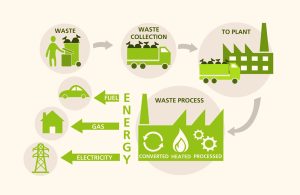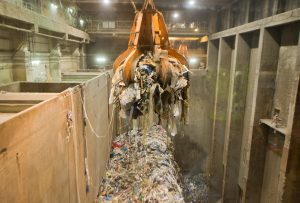The Potential of Waste-to-Energy Technology
Waste, once viewed solely as a burden on landfills and a hazard to the environment, is now being recognized as a valuable resource capable of generating clean and sustainable power. This shift is not only reshaping our approach to waste management but also offering a promising solution to our energy and power needs.
In this blog post, we’ll explore the concept of waste-to-energy technology, its benefits, challenges, and its potential to revolutionize the way we produce electricity.
Understanding Waste-to-Energy Technology
At its core, waste-to-energy technology involves the conversion of various types of waste materials into heat, electricity, or fuel through thermal, biological, or chemical processes. These processes can include incineration, gasification, pyrolysis, and anaerobic digestion, among others.
The fundamental idea is to extract energy from waste materials that would otherwise end up in landfills, thereby reducing the volume of waste while simultaneously producing usable power.

The Benefits of Waste-to-Energy
Environmental Sustainability:
By diverting waste from landfills and reducing the need for fossil fuels, waste-to-energy technology plays a crucial role in mitigating greenhouse gas emissions and combating climate change.
It helps to reduce the release of methane, a potent greenhouse gas, from decomposing organic waste in landfills.
Waste Management:
WTE facilities help alleviate the strain on traditional waste management systems by reducing the volume of waste that needs to be landfilled. This can help extend the lifespan of existing landfills and minimize the environmental impact of waste disposal.
Energy Security:
By diversifying the sources of energy production, waste-to-energy technology enhances energy security and resilience. It provides a reliable and renewable energy source that is less susceptible to fluctuations in fuel prices or geopolitical conflicts.
Challenges and Considerations
While waste-to-energy technology offers significant potential, it is not without its challenges and considerations.
Emissions and Pollution:
Some WTE processes, such as incineration, can generate air pollutants and greenhouse gas emissions if not properly controlled. Advanced pollution control technologies are essential to mitigate these environmental impacts.
Technological Complexity:
Implementing waste-to-energy projects requires sophisticated technology and infrastructure, which can be costly and complex to develop and operate.
Public Perception:
Waste-to-energy projects often face opposition from communities concerned about emissions, odours, and other potential environmental and health impacts. Effective communication and stakeholder engagement are crucial to addressing these concerns.
With continued innovation, investment, and collaboration, waste-to-energy has the potential to play a significant role in building a more sustainable and resilient energy future.
As governments and regulatory bodies increasingly prioritize renewable energy and sustainable waste management practices, we can embrace waste-to-energy technologies and position ourselves as leaders in meeting these environmental goals.



